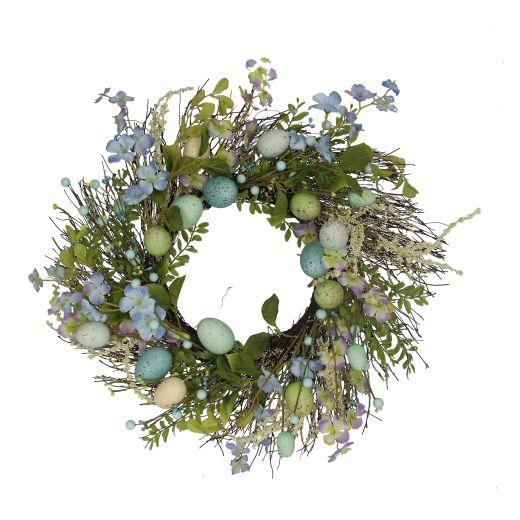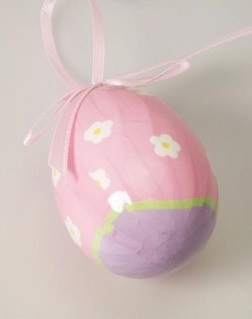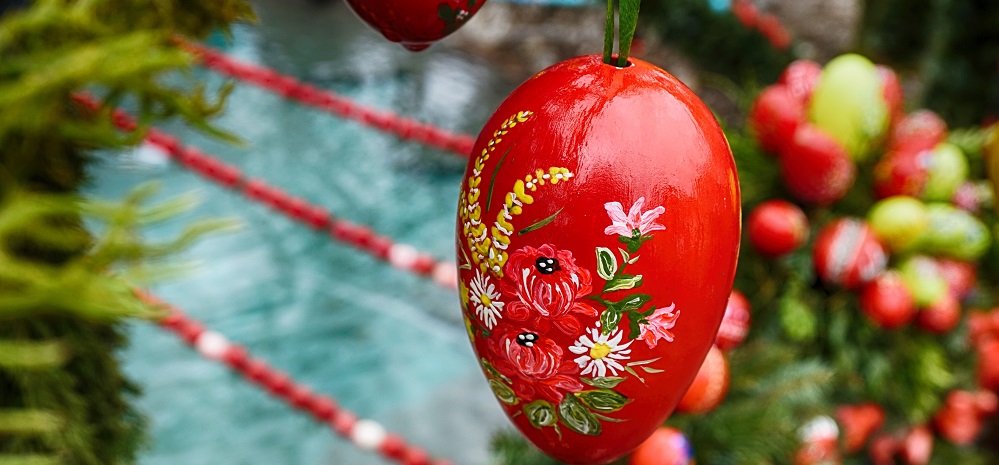Easter Trees

The German tradition of decorating trees with Easter eggs dates back hundreds of years. Sadly, the precise origins of the trees are now lost in the mists of time. The tradition is mostly observed in Germany and neighbouring Austria but Ostereirerbaum (Easter egg trees) are becoming increasingly popular across the globe.
Volker Ostereirerbaum
Bringing vibrant colour to your garden or home and hugely enjoyable to decorate, the trees and bushes are much-loved by youngsters. The best known Ostereirerbaum ever created was an apple tree in the garden of Volker Kraft in Saalfeld, Germany. Volker saw his first decorated tree in 1945 when he was on his way to school. That little lilac bush was to inspire Volker to create something altogether more dramatic in his own garden many years later.
In 1965 Volker and his family began decorating an apple tree by hanging 18 plastic eggs on its branches. The family gradually added new eggs to the tree which was adorned with no less than 350 by 1994. But the display was to become considerably more extravagant over the next few years. From 1994, an average of 700 new hand-blown and decorated Easter eggs were added each year. Some of these were lost due to the weather and vandalism. However, by 2012, the apple tree featured over 10,000 eggs and had become a tourist attraction.
Incredible though Volker Kraft’s tree undoubtedly was, it was to be outdone by another tree in 2007. A red oak in Rostock Zoo was decorated with over 79,000 eggs, a Guinness World Record.
The Volker family stopped decorating their much-loved tree in 2015 as the task was becoming too much for them.  The family was also struggling to cope with the number of visitors. Their Easter tree was taking 9 days to decorate and up to 8,000 people would visit the garden each year. The eggs were later donated to a local charity and were used to decorate another Ostereirerbaum.
The family was also struggling to cope with the number of visitors. Their Easter tree was taking 9 days to decorate and up to 8,000 people would visit the garden each year. The eggs were later donated to a local charity and were used to decorate another Ostereirerbaum.
Gisela Graham Easter Decorations
Gisela Graham was born and raised in Germany a country where families celebrate Easter in style by decorating their homes with handmade crafts. Gisela Graham has introduced this tradition to the British making her the market leader for Easter decorations in the UK.
Each year she designs four Easter/Spring ranges that are unique and charming. At Not run of the mill we are proud to have a selection of Gisela Graham Easter home decorations from bright pastel coloured garlands to wreaths to chicks bunnies and eggs to hang on an Easter tree.
How to create your own Easter Tree
You probably don’t want to burden yourself with an enormous project like the Kraft tree! But it is great fun to create a more modest feature which the whole family can enjoy. You could decorate a tree or bush in your garden. However, as eggs in any form will be damaged by the weather or even stolen, an indoor display is a more practical choice.
Branching out
All you need to do is gather or buy a few small branches. Leave these in their natural state or use spray paint to colour them. Place the branches in a vase or suitable container ready for decorating. Add sand or a filler to the container to stabilise the display.
Eggciting decorations
It is possible to buy a wonderful array of pretty eggs and decorations to adorn your tree. But there’s nothing quite like making your own! The good news is that you don’t need to be an expert in ceramics to create your masterpieces because you can decorate real egg shells.

Before you can decorate the shells, you will need to remove the eggs from inside them. It’s never good to waste food, so plan to do some baking or to have omelettes for dinner! Here’s how to remove the content of the eggs:
Take an egg and shake it for roughly five minutes to liquify the egg white and yoke.
Wipe the egg and then pierce each end with a needle.
When you insert the needle, wiggle it around a little to further mix up the egg and to enlarge the holes a little.
Hold the egg over a bowl with one hole pointing downwards
Blow into the other hole to push the contents of the egg into the bowl.
Wash out the empty shell and leave to it dry completely.
Repeat the process until you have sufficient eggs for your tree.
Painting your eggs
You can now transform your eggs into beautiful decorations which bring a riot of colour to your home. All you need is a few skewers, small elastic bands, acrylic paints, paintbrushes, ribbon and any embellishments that you would like to add as finishing touches.
Before painting the eggs, decide upon a theme or colour scheme for your display. Make rough sketches of your designs on paper to see how they look, so you don’t end up wasting your eggs and paint.
- Take the skewers and wrap a small elastic band around each one, roughly halfway down.
- Pass the skewers through the holes in the eggs. The elastic bands will hold the shells in place.
- It is now easy to hold the eggs and colour them using your acrylic paints.
- After painting each egg, stick the skewer into an egg carton or similar to keep the egg elevated while the paint dries.
- Once the eggs have dried, you can glue on your embellishments including ribbons, sequins, felt shapes and glitter.
- Glue loops of ribbon to the eggs to create hangers.

Dressing your Easter tree
Hang your eggs on your branches to complete your Easter display. Your eggs could be joined by other Easter-themed decorations including chicks and bunnies. These can be made by purchasing small toys and attaching ribbons. When Easter is over, store your painted eggs in egg cartons to keep them safe until the following year.
You can build up your collection of painted eggs over the years to produce ever more spectacular displays. You won’t have to eat too many omelettes at once and you will be establishing your own family tradition which provides something to look forward to every year.
